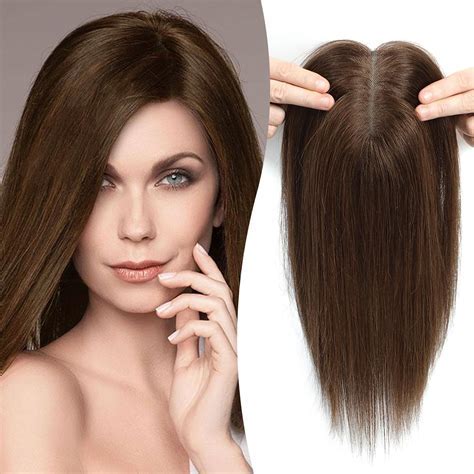Thinning hair can be a distressing issue that affects millions of people worldwide. According to the American Hair Loss Association, approximately 40% of women over the age of 40 experience some form of hair loss. While there are numerous factors that can contribute to thinning hair, including genetics, hormonal changes, and certain medical conditions, it can be a frustrating and embarrassing experience.

Hair extensions offer a non-surgical solution to thinning hair, allowing you to achieve fuller, more voluminous locks in an instant. In this comprehensive guide, we will delve into everything you need to know about hair extensions for thinning hair, from different types and methods of application to tips for choosing the right extensions for your individual needs.
Types of Hair Extensions for Thinning Hair
There are several types of hair extensions available for thinning hair, each with its own unique benefits and drawbacks. Here are the most common types:
1. Clip-In Extensions:
- Easy to apply and remove on your own
- Come in a variety of lengths, textures, and colors
- Can be used to add volume and thickness to specific areas of the scalp
- Can be bulky and uncomfortable to wear for extended periods
2. Tape-In Extensions:
- Thin, double-sided tape is used to attach extensions to your natural hair
- Semi-permanent, lasting 6-8 weeks
- Provides a natural look and feel
- Can be uncomfortable to remove and may damage natural hair
3. Fusion Extensions:
- Extensions are attached to natural hair using heat-bonded keratin
- Permanent, lasting 3-6 months
- Provides the most volume and coverage
- Can be expensive and damaging to natural hair
4. Micro-Link Extensions:
- Small metal beads are used to attach extensions to natural hair strands
- Semi-permanent, lasting 2-3 months
- Can be customized to match the thickness of your own hair
- May be noticeable if not applied correctly
Choosing the Right Extensions for Thinning Hair
When choosing hair extensions for thinning hair, there are several factors to consider:
- Hair Type: Extensions should match your natural hair type as closely as possible in terms of texture and thickness.
- Thinning Pattern: Consider the areas where your hair is thinning and choose extensions that will provide coverage in those areas.
- Lifestyle: If you have an active lifestyle or frequently style your hair, you may need to consider extensions that are more durable and less prone to shedding.
- Budget: Hair extensions can range in price from a few hundred dollars to several thousand. Determine your budget before you start shopping.
Benefits of Hair Extensions for Thinning Hair
Hair extensions for thinning hair offer numerous benefits, including:
- Increased Volume and Thickness: Extensions can instantly restore volume and thickness to thinning hair, creating a fuller, more youthful appearance.
- Concealed Thinning: Extensions can be used to cover up thinning areas of the scalp, giving you a more confident and carefree look.
- Versatility: Extensions allow you to experiment with different hairstyles and colors without damaging your natural hair.
- Self-Esteem Boost: Fuller hair can have a positive impact on your self-esteem and confidence.
Tips for Applying and Maintaining Hair Extensions
- Consultation: Before getting extensions, consult with a professional hair stylist to discuss your options and determine the best type of extensions for your needs.
- Preparation: Wash your hair and remove any styling products before applying extensions.
- Application: Follow the instructions provided by your stylist carefully when applying hair extensions.
- Maintenance: Hair extensions require regular care, including brushing, washing, and conditioning. Your stylist can provide you with specific instructions for caring for your extensions.
Thinning Hair Treatment Options
In addition to hair extensions, there are several medical and non-medical treatments available for thinning hair, including:
- Minoxidil: A topical solution that helps to stimulate hair growth
- Finasteride: A prescription medication that blocks the production of DHT, a hormone that contributes to hair loss
- Hair Transplant: A surgical procedure that involves transplanting healthy hair follicles to thinning areas of the scalp
- Scalp Massages: Massaging the scalp can increase blood flow to the hair follicles, promoting hair growth
- Healthy Lifestyle: Eating a healthy diet, exercising regularly, and managing stress can all contribute to hair health
Conclusion
Hair extensions can be an effective solution for thinning hair, providing immediate volume and thickness while concealing areas of hair loss. With careful consideration and proper maintenance, you can enjoy fuller, more youthful hair with hair extensions for thinning hair. Remember to consult with a hair stylist to determine the best type of extensions for your individual needs and to ensure proper application and care.
